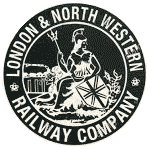
Construction of the railway had commenced near the end of the War utilizing 2 foot (610 millimeter) gauge War Department Light Railways equipment with 30 pound light rail. Power to pull the loads was first supplied by two Hudswell Clarke 0-6-0T steam locomotives. Proving unsuccessful due to the tight curves on the line they were sold by 1921 to be replaced by internal combustion locomotives.
The railway connected various quarries such as Chamberlain's Barn, New Trees Quarry, Munday's Hill, Churchways, and the Double Arches Quarry at the north end of the line to an interchange with the standard gauge railway located at Grovesbury Sidings just south of Leighton Buzzard.
Following the end of World War II sand once again began to be transported by road. By 1960 only one quarry, Arnold's, was left using the railway. In 1969 the standard gauge line to Grovesbury Sidings was abandoned. The last sand train ran on the narrow railway in 1969.
"The Iron Horse Railway Preservation Society" took over maintenance and operation of the line about this time running a passenger service on weekends. Over the years a large collection of steam and internal combustion locomotives have been amassed by the Leighton Buzzard Railway.

